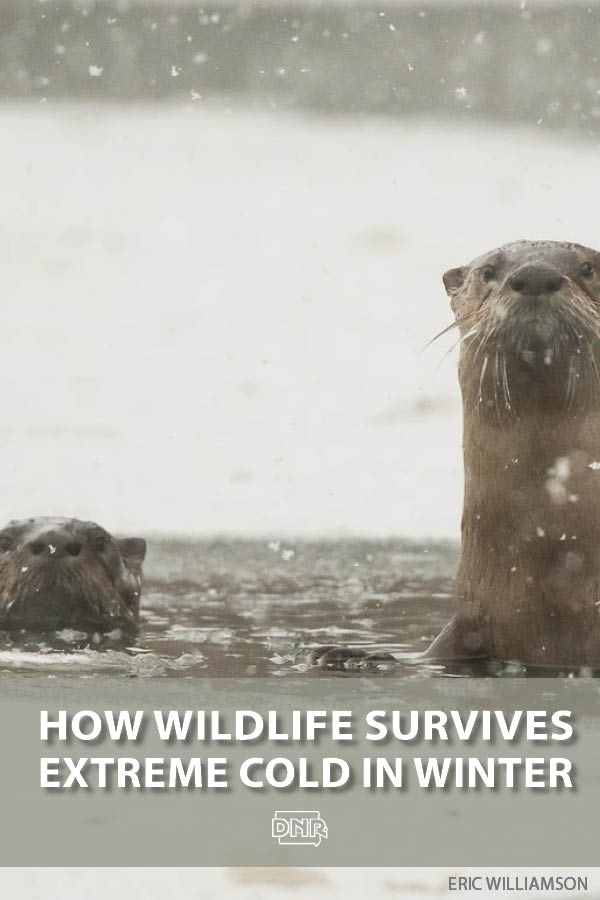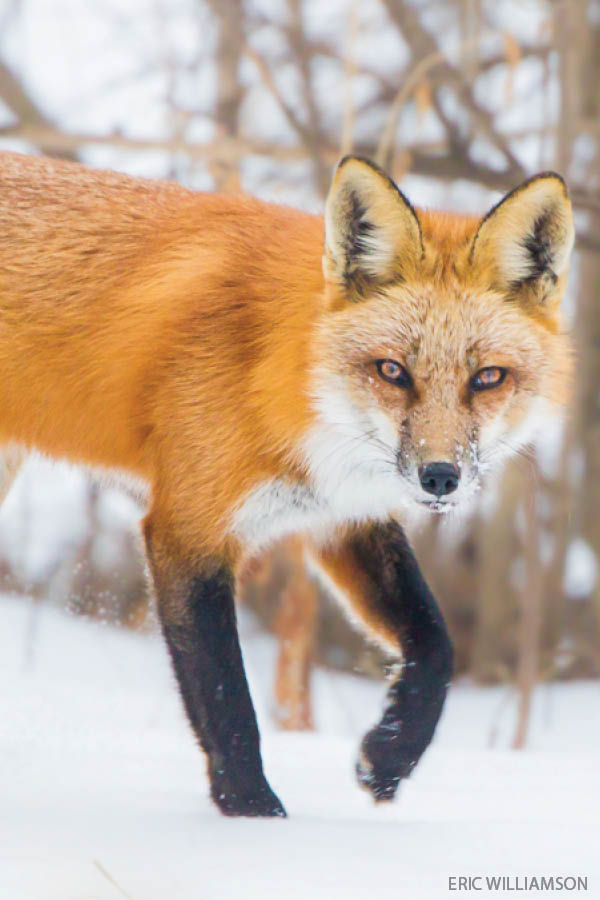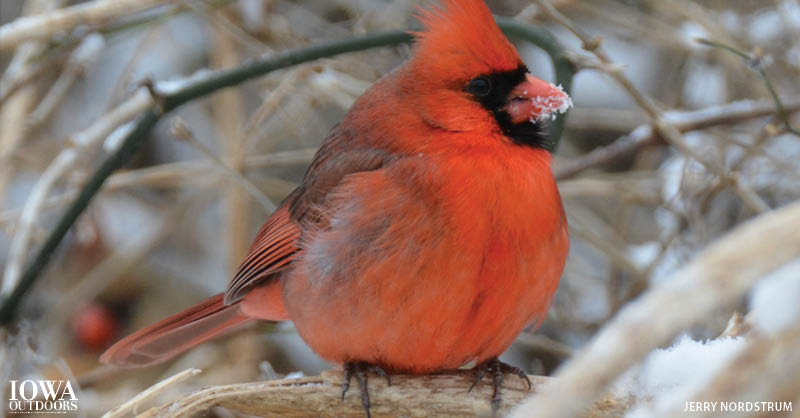When wind chills dip so low that they can lead to frostbite in just minutes - you might be wondering how Iowa’s wildlife survives such brutal cold. Step back from the bread, eggs and milk aisles to learn how everything from mice to deer ride out the storm!
 I’ve got a bad feeling about this
I’ve got a bad feeling about this
Wildlife don’t have the benefit of radar and weather alerts on their smartphones. But they don’t need it - animals are often very tuned-in to environmental changes around them and can sense coming weather events, especially changes in barometric pressure.
Netflix and chill
Just like Iowans descending upon grocery stores before curling up on the couch with the remote and a thick blanket, Iowa’s wildlife prepare, too. Beavers, squirrels and other critters who store food for the winter might raid their caches. Wildlife will feed as heavily as they can before the storm, and then hunker down to wait out the weather. Moving less burns less energy and allows the feast to hold them over longer.
Let the sun shine in
Larger animals like deer and turkeys will try and reduce exposure to the wind - often seeking out evergreen trees to use as a windbreak - and orient their body to capture sunshine from a southern exposure.
Going underground
Plenty of critters will hang out in underground dens to avoid the cold. Mice will tunnel under the snow to stay warm and avoid predators (although foxes and owls are pretty talented at spotting a mouse moving under the snow).
High-rated insulation
Mammals’ fur is specially designed to keep animals warm in frigid conditions, especially those that grow thicker winter coats. Animals that nest spend time insulating their homes with grass and other materials to stay warm. And the waterfowl that overwinter here wear lovely down insulation to stay toasty. The most creative? That might be our native gray treefrog, which produces glycerol and other chemicals that act like antifreeze for their blood.
Sleep it off
There are plenty of Iowa critters who will be oblivious to the storm, as they’re either hibernating or brumating (a type of winter dormancy for reptiles and amphibians). To hibernate, Iowa mammals – like bats, woodchucks, ground squirrels, some mice and a few other rodents – curl into a ball and reduce their heart and breathing rates, body temperature and metabolism. Amphibians and reptiles, which are cold-blooded and depend on the environment to stay warm, normally burrow below frost level or into the mud of a lake bottom and drastically slow their bodily functions until spring.
 Some other animals in Iowa don’t take a season-long snore, but a series of long naps. Mammals like badgers, raccoons, chipmunks and skunks will take a deep sleep for a couple of days up to two weeks in order to reduce their need for food when it’s scarce.
Some other animals in Iowa don’t take a season-long snore, but a series of long naps. Mammals like badgers, raccoons, chipmunks and skunks will take a deep sleep for a couple of days up to two weeks in order to reduce their need for food when it’s scarce.
Strength in numbers
Squirrels may stay in den trees and keep close to conserve energy. Other animals without a den, like deer, may huddle up together to conserve body heat. Raccoons might find hollow logs to stay out of the wind. Bats hibernate close together in tight clumps to preserve heat. Turkeys will often roost in the trees through prolonged periods of bad weather until they’re forced to come down to feed.
Frozen fish sticks
And just how do fish make it through the winter without freezing solid? While in extreme situations, some small ponds or streams may freeze through, that’s generally not the case. Ice forms at the surface first, not from the bottom up. As air temperatures drop, the water on top of the lake begins to freeze once it hits 32 degrees.
Since ice is less dense than the warmer water below, the ice stays on top of the lake instead of sinking. Still, that’s really cold water - but it’s not a problem for fish, because they’re cold-blooded. Their body temperature is the same temperature as the water.
Snowbirds
It’s not just people headed to Arizona and Florida. Plenty of Iowa’s wildlife head for warmer locales in the winter and avoid the deep freeze altogether, too. Monarch butterflies migrate to Mexico. A number of songbirds go as far as Central and South America for the winter. Even some dragonflies migrate!
Not the first rodeo
Iowa’s wildlife have survived through generations of bitter cold prairie winters - they’re built to withstand these periodic events. However, days of exposure to the cold without good protective habitat or enough food can be detrimental to populations.
And the situation is not the same for pets - bring them inside if at all possible, and if not, make sure they have the right shelter to stay warm and that water bowls don’t freeze.
